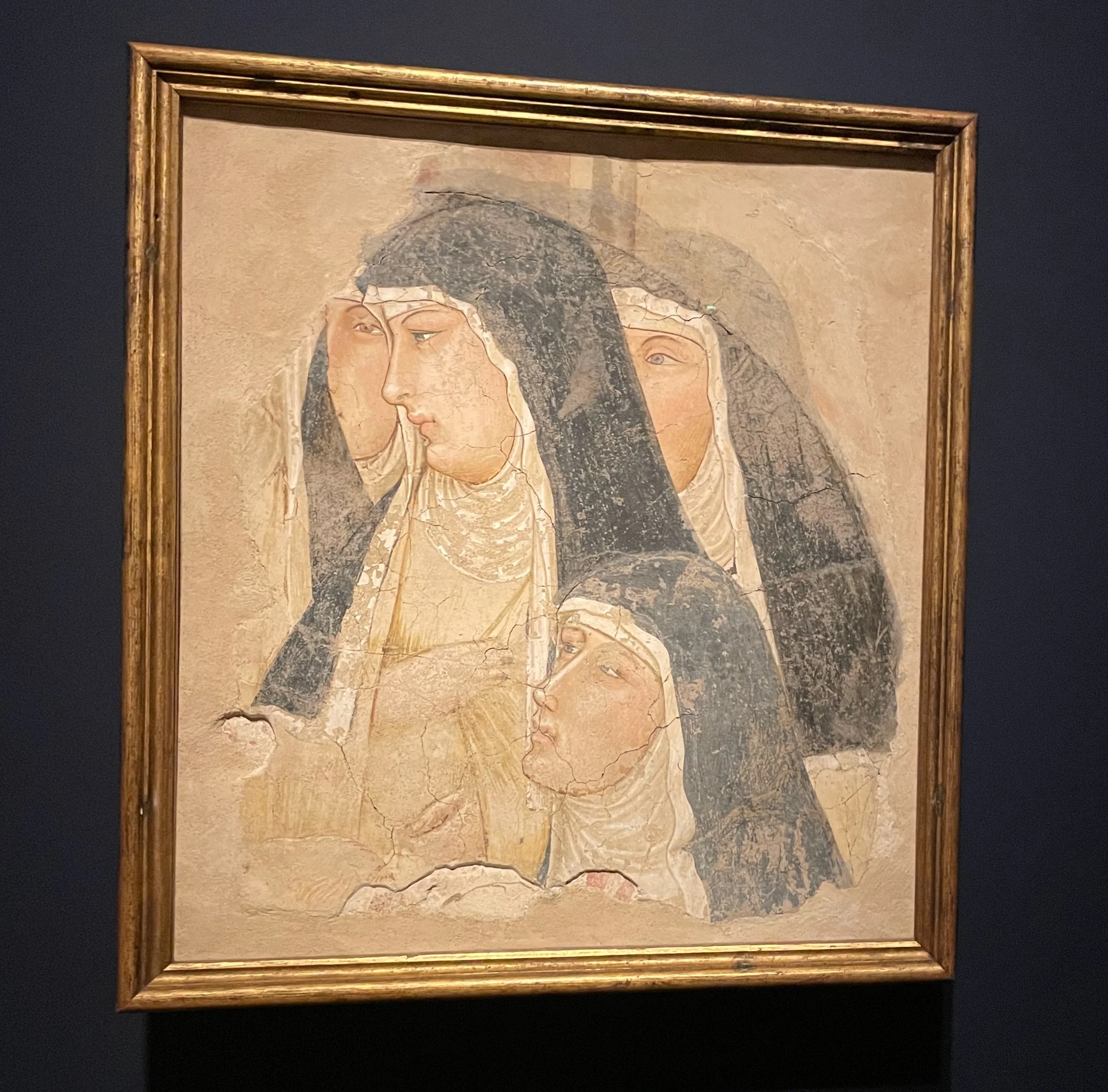I recently visited the suprisingly wonderful exhibition Siena 1300–1350: The Rise of Painting, and I left deeply moved—not just by the beauty of the works, but by the powerful narrative of transformation. Walking through the galleries felt like traveling through time, witnessing a civilisation in the act of discovering its own emotional depth and visual language.
The exhibition opens with a striking example of what painting once was: a traditional Byzantine icon. It is a beautiful, reverent object, but rooted in convention. Every line and gesture follows a strict formula—a visual code developed for devotion, not expression. The flat gold background, the stiff frontal pose, and the stylized features of the Virgin and Child present a world where symbolism outweighed individuality. These icons were not meant to tell new stories, but to serve as sacred, unchanging archetypes.
Moving through the exhibition, I could feel the walls of tradition loosening. By the time I reached the final gallery, the difference were profound. Here, Pietro Lorenzetti’s frescos from around 1325 brought an entirely new world into view—one where emotion, movement, and human connection were not just present, but essential.
Lorenzetti’s work breathes with life. Figures interact with believable weight and space. Drapery clings and folds in natural ways. There is a softness to the faces, a nuance in the gestures, and an attention to setting that makes these works feel closer to our own emotional and physical experience of the world. It’s not just more beautiful—it’s more human.
This shift, I learned, was made possible by several key developments. First, a growing understanding of perspective and proportion allowed artists to build more convincing spatial environments. Figures were no longer isolated against abstract gold grounds; they now inhabited rooms, courtyards, and landscapes. This new spatial awareness gave painters the tools to tell richer, more dynamic stories.
Second, technical innovations played a significant role. The arrival of new pigments—such as ultramarine, made from expensive lapis lazuli—expanded the color palette dramatically. Fresco and tempera techniques also evolved, giving artists more control over detail and tone. These tools helped artists model form with greater realism and to evoke light, texture, and even mood in a way that was impossible just a generation before.
What struck me most, though, was the emotional evolution on display. Art had moved from the eternal to the ephemeral—from timeless unchanging symbols to living people. In this relatively short 50-year span, we see the seeds of the Renaissance being sown, as Sienese painters like Duccio, Simone Martini, and especially the Lorenzetti brothers began to break away from the rigid legacy of Byzantium and toward a more expressive and narrative style.
The Rise of Painting is not just a display of masterpieces—it’s an example of a cultural awakening. To stand before those frescos and trace this arc from formula to feeling was a privilege, and a reminder that art, at its best, reflects our growing understanding of ourselves.
